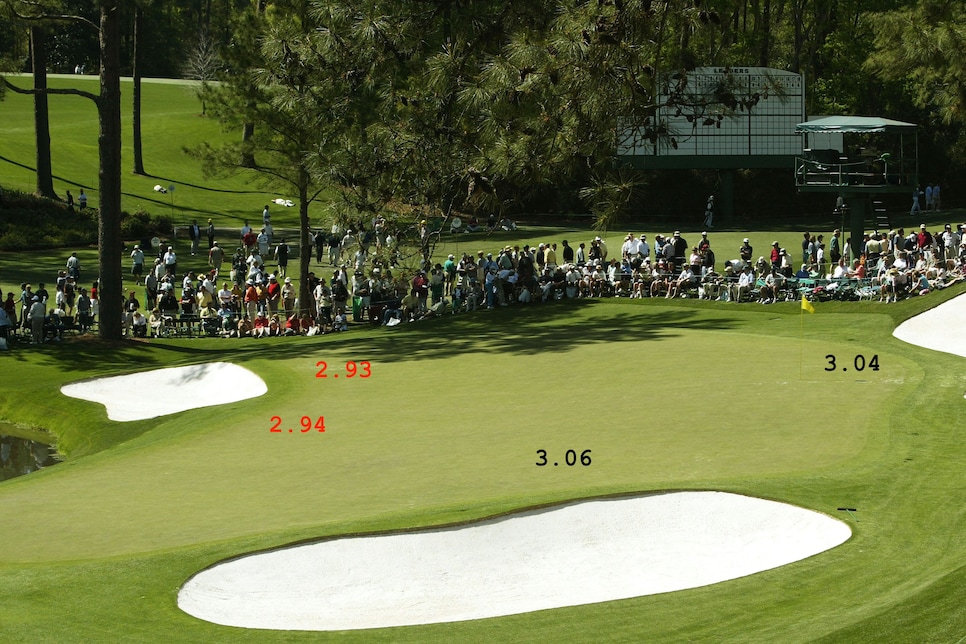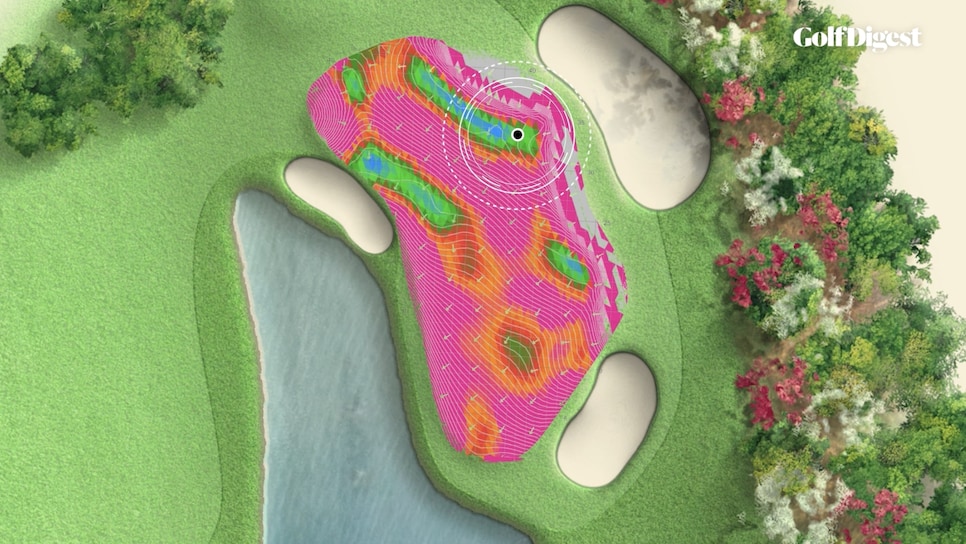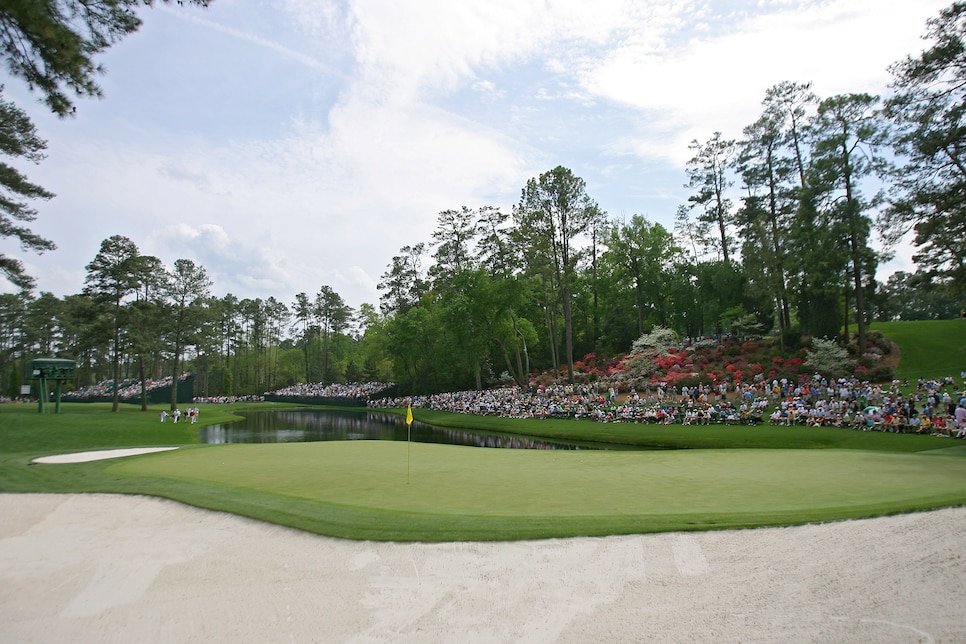
Augusta National’s most effective way of defending itself against the best golfers in the world has always been its greens. This was especially important before the club made changes to the course around 20 years ago. Back then, the fairways were wide—ranging from 30 to 80 yards—and players could attack them aggressively without much concern. Because of this, the greens had to be the primary challenge.
Although Augusta has since tightened some fairways—especially at holes 7, 11, 15, 17, and 18—by adding pine trees and light rough, the course is still favorable for long hitters. Yet, the greens remain a key factor in controlling scores. They do this not just through their speed but more critically through the placement of hole locations.

The way Augusta positions the flagsticks each day has a more significant impact on scoring than most other courses. In today’s game, where most pros can hit the ball over 325 yards and manage spin with incredible precision, Augusta’s strategic use of hole locations keeps the course challenging and unpredictable.
Every green at Augusta, whether it’s large and undulating, multi-leveled, or sloped, is designed with at least four distinct hole placements. Each of these placements changes how players approach the green and how likely they are to make birdies. Some locations are accessible if the approach is made from the correct angle, using natural slopes—like the front-right bowl on the 7th green or the ridge that guides shots on the par-5 13th. Other greens, such as those on the 4th and 15th holes, don’t offer easy birdie chances from any position, requiring precise putting instead.

Holes are usually cut in flatter areas of the greens, where the slope is around 2 percent or less. This allows for fair play but still challenges players depending on pin location.
A good example is the par-3 16th hole. It plays about 170 yards—typically a short iron shot—but the green is set on a diagonal slope next to a pond and is divided by a spine running through it. This creates a high-right tier and a low-left tier, allowing four distinct hole placements: two on the top (front-right and back-right) and two on the lower level (center and back-left).
When the pin is placed on the upper right, players must fly the ball directly to the hole, navigating two deep bunkers. If they don’t land the shot precisely, the ball may roll down to the lower tier, making birdie nearly impossible. However, when the hole is placed on the lower left—especially the traditional Sunday back-left location—players can use the slope of the green to guide their shots toward the flag, often without aiming directly at it. This increases birdie chances dramatically.
Despite scoring averages across the four hole locations being fairly close (ranging from 2.93 to 3.06), the number of birdies tells a different story. Since 2018, there have been only 131 birdies to the upper pin positions compared to 256 birdies—and four holes-in-one—when the pin is on the lower left. That’s nearly double the birdies from the lower tier.
In terms of bogeys, both tiers are similar, with 148 on the upper and 141 on the lower. However, the lower tier—due to its proximity to the water—has produced more double bogeys or worse: 29 compared to just 15 on the upper level.
This means that Augusta can set up the 16th to play as a tough par hole by placing the pin on the upper right, or turn it into a birdie opportunity with a left-side location. Yet the more inviting birdie chances on the left also bring a higher risk of big mistakes.
The 16th hole is just one example of how Augusta National uses hole locations to control scoring. Each green has similar possibilities, allowing the course to change in difficulty from one round to the next. For instance, the 16th can be part of a birdie-rich stretch on the back nine (along with two par-5s and a favorable 14th hole), or it can become the beginning of a tough finishing stretch, depending on where the hole is cut. This strategic use of green design and pin placement is what continues to make Augusta National one of golf’s most complex and brilliant tournament venues.